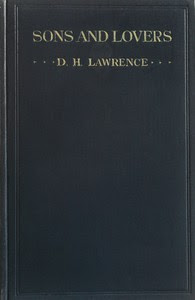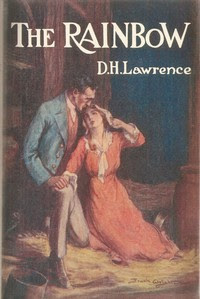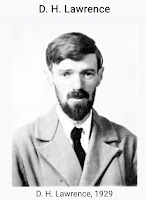Evenings with Great Authors
by Sherwin Cody
1868-1959
VOLUME I
How and What to Read; Shakespeare ; Lincoln
LEARNING TO LIKE GREAT AUTHORS
WHEN I first saw Charles Dudley Warner's monumental library of literature I felt that few people would really read those large volumes, in which each author was represented by examples or specimens of his work. Young people, especially, do not care for " specimens," but want interesting human material that is alive today. Each author, it seemed to me, should be represented with that which would make the most interesting evening's reading from his works, something with the element of completeness, in which the human interest' dominated over the literary. After all, it is human interest that holds us all.
The present series has therefore been prepared with a view to introducing the reader to a number of our greatest authors as personal and helpful friends. I have known these authors, and they have meant a great deal in my life. I have myself enjoyed reading the stories and poems here presented, and I have separated that which I enjoyed most from some things I enjoyed less; and I now offer this series of studies as presenting what I consider the most stimulating reading from these great authors.
Great authors became popular in their day because what they had to say in their books was closely related to the lives of the people who bought their books. The books were not bought because they were great literature. People bought them because they gave an insight into life, because they rested the heart and lightened the burden of daily living.
As time has gone on and these great authors have become more or less out of date, parts of their writing have ceased to have a living human interest. A novel of 300,000 words, that takes a full week, ten hours a day, to read, is too long for many young people at any rate, and there are plenty of older readers who never have time to wade through it. The possessor of the complete works of a poet who really reads that poet has certain poems marked which are read and read again, while scores or hundreds of others are passed over as having ceased to carry a living interest. Few people have the time to separate the living from the dead, and so do not read the author at all. -
First I have tried to present the a;uthor as a human being and a friend. I have told every fact of his life that was important, but giving the facts of the life has been subordinate to the sympathetic appreciation of the friend.
Then follows the work which best represents the personality of the author, or which I myself believe the reader will like best to read. Every author is better known by his own writings than by the facts of his life, and we can know an author only in what he has written. That is his real self, as opposed to the exterior husks of biographical facts.
For example, every known fact of the life of Shakespeare has been stated in the short outline of his life. For the inferences and guesses and studies of his times, readers will naturally go to other works. Then his three most popular plays are presented, the Merchant of Venice, Romeo and Juliet, and Hamlet, with the omission of the scenes we care least for in these days. In this way stage versions of the plays are cut down in order to make them acceptable to our modern theaters. The complete Hamlet requires four hours to read through; this version can be read in three-quarters of an hour; yet a certain person who had read the original play six times, could not recall a single passage or quotation which he did not find in my version. The play based on Vanity Fair is called Becky Sharp, and the chapters of the. book which deal with the character and life of Becky, separated from those which present all the other characters of the story, are given in my version (see Vol. II, Evenings with Great Authors) practically complete as they are in the original. To us Vanity Fair means Becky Sharp, and we care little for anything but her. Becky Sharp we can get in an evening, either on the stage or in this book.
The person who has read all these books already, will no doubt enjoy rereading them as a judicious reader would skip, picking his favorite passages and turning lightly over those he cares for less.
The young person (or older person either) who has not yet learned to like these great authors will here get enough of a taste of each author's writing to be in a fair way to like him, and be led to go to the library and get his complete works. The best "come-on" in literature is a good taste of something that tastes good, a complete, luscious berry" ready covered with sugar and cream to make it appetizing.
I believe that if anything will make people go to the library and read the works of any author, it is pleasant, human introductions like these.
For school purposes, these selections ought to help many children to get started in the liking for good books. If they enjoy these short versions, they are very much more likely to want to read the complete works.
Sherwin Cody.
HOW AND WHAT TO READ
I What Constitutes a Good Poem? ... i
II What Constitutes a Good Essay? ... 10
III What Constitutes a Good Novel? ... 16
IV Landmarks in Modern Literature ... 27
V The Best Poetry and How to Read It . . 37
VI How to Study Shakespeare 50
VII The Best English Essays 59
VIII Old Novels that are Good 66
IX The Romantic Novelists — Scott, Hugo, Dumas 73
X The Realistic Novelists — Dickens, Thackeray, Balzac 86
XI The Short Story — Poe, Hawthorne, Maupassant 101
XII Qassic Stories for Young People ... 106
Index of Recommended Books .... 108
PART II
AN EVENING WITH SHAKESPEARE
His Life and Works 115
The Merchant of Venice 133
Romeo and Juliet 167
Hamlet 205
PART III
AN EVENING WITH LINCOLN
His Life and Character 265 , Letters and Recollections 301
Speeches 321
Anecdotes 349
About the Author
Alpheus Sherwin Cody (November 30, 1868 – April 4, 1959) was an American writer and entrepreneur who developed a long-running home-study course in speaking and writing and a signature series of advertisements asking “Do You Make These Mistakes in English?” A critic of traditional English education, Cody advocated colloquial style and grammar. His course, presented in a patented workbook format which he described as self-correcting, was purchased by over 150,000 students from its inception in 1918. He published essays, books and articles virtually nonstop from 1893 through 1950. In a book published in 1895, he gave the advice, "Write what you know—so go out and know something." Wikipedia
Buy Sherwin Cody Books at Amazon
The PDF might take a minute to load. Or, click to download PDF.
If your Web browser is not configured to display PDF files. No worries, just click here to download the PDF file.


.jpeg)
.jpg)






.jpg)
